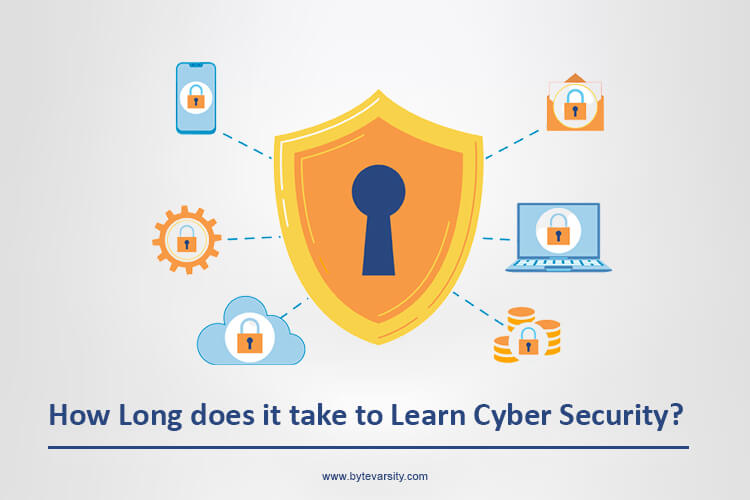What is Spooling in Cyber Security?

Spooling is a method of temporarily storing data on a disk or other storage device so that a computer’s central processing unit (CPU) can access it more efficiently. Spooling is often used to buffer input and output data for a computer program or system, allowing the program or system to process the data more quickly and efficiently.
This can be particularly useful when working with large amounts of data or when dealing with slow input or output devices, such as printers or tape drives.
Contents
- 1 Types of Spooling Vulnerabilities:
- 2 Other Attacks Similar to Spooling:
- 3 How a Spooling Attack Works?
- 4 What are the Advantages and Disadvantages of Spooling?
- 5 Why Spooling a Cyber Security issue?
- 6 Ways to Upgrade Your Security Against Spooling Attacks
- 7 What Cybersecurity Protocols Can Prevent Spooling Attacks?
- 8 Conclusion:
Types of Spooling Vulnerabilities:
There are several types of spooling vulnerabilities that can be exploited by attackers:
- Spool overflow: This occurs when a spool file exceeds the allocated space and overwrites other files or data on the system.
- Unchecked spooling: This occurs when a spool file is not properly checked for malicious content before being processed.
- Spool injection: This occurs when an attacker injects malicious code into a spool file, which is then executed when the file is processed.
- Spool format string vulnerabilities: This occurs when an attacker is able to inject format string specifiers into a spool file, which can lead to code execution or other malicious actions when the file is processed.
- Spool file race condition: This occurs when an attacker can manipulate the timing of spool file processing, allowing them to overwrite or delete legitimate files or data on the system.
Overall, It is important for system administrators to ensure that spooling systems are properly secured and configured to prevent these types of vulnerabilities.
Related Article: Difference between Spam and Phishing
Other Attacks Similar to Spooling:
Other attacks similar to spooling include buffer overflow, format string attacks, race conditions, input validation attacks, and file inclusion attacks. These types of attacks exploit the way a computer or system processes data and can lead to unexpected or malicious behavior.
To protect against these types of attacks, it is important for system administrators to implement input validation, access control, and regular security patching. Additionally, it is important to be aware of these types of attacks and to stay informed about new and emerging threats to ensure that systems are properly secured.
How a Spooling Attack Works?
A spooling attack typically works in the following steps:
- The attacker identifies a target system or program that uses spooling to process data. This could be a printer, a tape drive, or any other type of device or program that uses spooling.
- The attacker creates a malicious spool file that contains code or data that will be executed or processed when the spool file is read. This could be a file containing malware, a file that overwrites legitimate data, or a file that causes a buffer overflow.
- The attacker submits the malicious spool file to the target system or program, either by sending it directly to the spooler or by tricking a user into submitting the file.
- The target system or program reads the spool file and processes the data or code contained within it. This could cause the system to crash, the execution of malware, or the overwriting of legitimate data.
- Depending on the type of attack, the attacker can now access the system, exfiltrate data, or cause damage to the system, such as data loss or unauthorized access.
It’s important to note that an attacker could also exploit vulnerabilities in the spooling software itself, this way, the attack can take place without the need to submit a malicious spool file.
What are the Advantages and Disadvantages of Spooling?
Advantages of spooling include:
- Improved efficiency: Spooling allows a computer’s central processing unit (CPU) to access data more quickly and efficiently by temporarily storing it on a disk or other storage device.
- Better performance: Spooling can help a computer program or system process large amounts of data more quickly and smoothly.
- Increased throughput: Spooling can increase the throughput of input and output operations, which can be particularly useful when working with slow input or output devices, such as printers or tape drives.
- Increased reliability: Spooling can help prevent data loss and improve the reliability of a computer program or system by allowing it to continue processing data even if an input or output device fails.
Disadvantages of spooling include:
- Increased risk of security vulnerabilities: Spooling can introduce security vulnerabilities, such as buffer overflow, file inclusion attacks, and other types of spooling-related attacks.
- Increased storage requirements: Spooling requires additional storage space on a disk or other storage device to temporarily store data.
- Increased complexity: Spooling can add complexity to a computer program or system, which can make it more difficult to troubleshoot and maintain.
- Increased chance of data corruption: Spooling can increase the chance of data corruption if the spooling system is not properly configured or maintained.
Overall, Spooling has its advantages and disadvantages, it can provide benefits to a computer program or system but it also requires extra attention to security and maintenance to prevent vulnerabilities and data corruption.
Why Spooling a Cyber Security issue?
Spooling can be a cybersecurity issue because it can introduce vulnerabilities in a computer program or system. A spooling attack can occur when an attacker creates a malicious spool file that contains code or data that will be executed or processed when the spool file is read.
This could be a file containing malware, a file that overwrites legitimate data, or a file that causes a buffer overflow. The attacker can then submit the malicious spool file to the target system or program, either by sending it directly to the spooler or by tricking a user into submitting the file.
When the target system or program reads the spool file and processes the data or code contained within it, it can cause the system to crash, the execution of malware, or the overwriting of legitimate data. This way, the attacker can gain access to the system or exfiltrate data.
Also, if the spooling software itself has vulnerabilities, an attacker can exploit them to take control of the system or cause damage.
Therefore, it is important to be aware of these types of attacks and to take appropriate measures to protect systems such as input validation, access control and regular security patching.
Ways to Upgrade Your Security Against Spooling Attacks
There are several ways to upgrade your security against spooling attacks:
- Input validation: Implement input validation to ensure that only valid and expected data is accepted by the system. This can help prevent malicious spool files from being processed by the system.
- Access control: Implement access control measures to ensure that only authorized users are able to submit spool files to the system. This can help prevent unauthorized users from submitting malicious spool files.
- Regular security patching: Regularly update and patch the system and spooling software to address any known vulnerabilities.
- Use of Antivirus and Anti-malware software: Use of Antivirus and Anti-malware software to detect and prevent malware from being executed on your system.
- Monitor and Audit: Regularly monitor and audit system logs for any suspicious activity, and investigate any unusual behavior or patterns.
- Employee education: Educate your employees about the dangers of spooling attacks and how to identify and avoid them.
- Use of Firewall: Use of firewall to block unwanted network traffic and to prevent unauthorized access to your system
- Using encryption on sensitive data: Consider using encryption to protect sensitive data stored on the system, this way it can prevent data exfiltration.
By implementing these security measures, you can reduce the risk of a spooling attack and protect your system against malicious spool files.
What Cybersecurity Protocols Can Prevent Spooling Attacks?
There are several cybersecurity protocols that can prevent spooling attacks:
- Access control protocols: Access control protocols, such as role-based access control (RBAC) or attribute-based access control (ABAC), can be used to ensure that only authorized users are able to submit spool files to the system.
- Input validation protocols: Input validation protocols, such as regular expressions or data validation libraries, can be used to ensure that only valid and expected data is accepted by the system, preventing the processing of malicious spool files.
- Network security protocols: Network security protocols, such as firewalls or intrusion detection/prevention systems, can be used to block unwanted network traffic and prevent unauthorized access to the system.
- Encryption protocols: Encryption protocols, such as SSL or TLS, can be used to encrypt sensitive data stored on the system, preventing data exfiltration.
- Authentication protocols: Authentication protocols, such as multi-factor authentication or password policies, can be used to verify the identity of users attempting to access the system.
- Vulnerability management protocols: Vulnerability management protocols, such as regular security patching, can be used to address known vulnerabilities in the system and the spooling software.
- Logging and monitoring protocols: Logging and monitoring protocols, such as system logs and intrusion detection/prevention systems, can be used to detect and respond to suspicious activity.
By implementing these cybersecurity protocols, organizations can improve their security posture and reduce the risk of a spooling attack.
Conclusion:
Spooling is the process of temporarily storing data before it is processed or printed. In cybersecurity, spooling can lead to vulnerabilities if a malicious spool file is created. A spooling attack can cause system crashes, malware execution and data overwriting.
To prevent spooling attacks, it’s important to implement security measures such as input validation, access control, patching and use of firewalls, encryption and antivirus software.
Additionally, cybersecurity protocols such as access control, input validation, network security, encryption and logging and monitoring protocols can help to improve the security posture.






